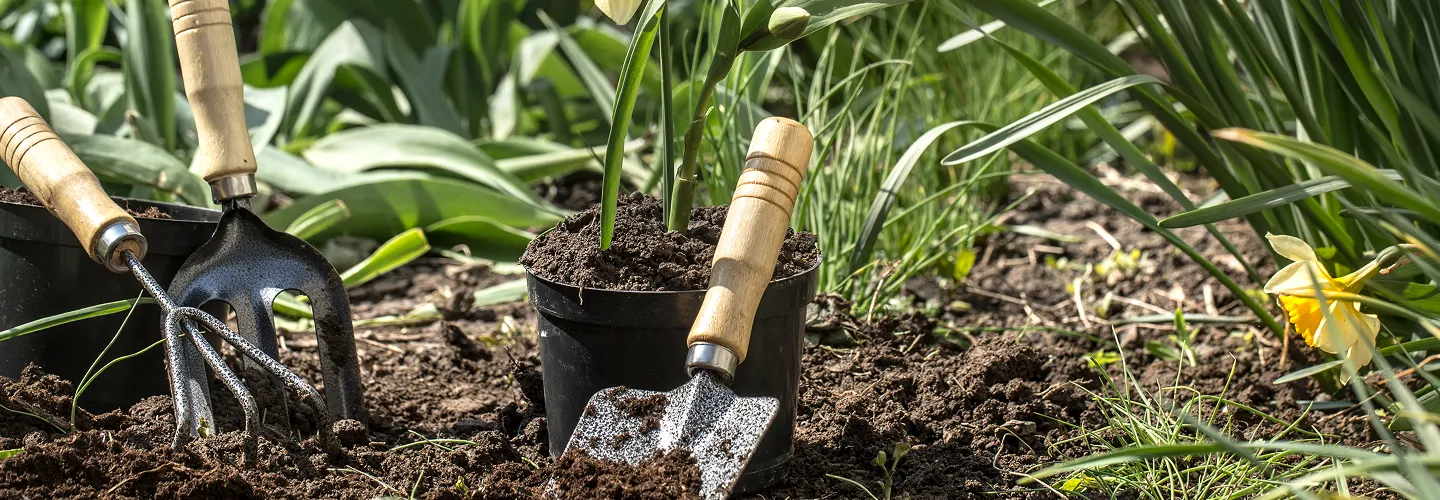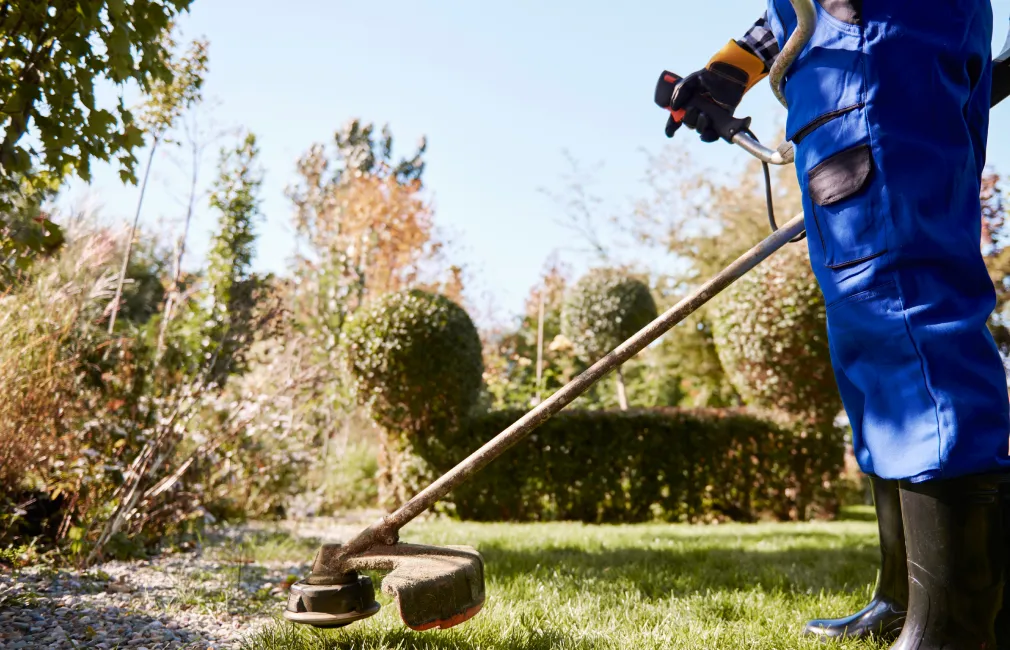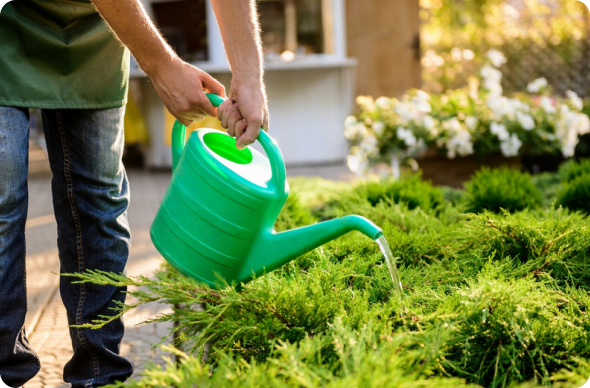
Kingston Leaf Removal Services
Choose our expert leaf removal for a hassle-free, thorough cleanup that keeps your property looking pristine and healthy all season long.
Get a Free QuoteWhen to Schedule Leaf Removal in Kingston, MA – Seasonal Guide
In Kingston, MA, the best times for leaf removal are typically late October through early December, and again in early spring before new growth begins. The town’s coastal climate means that autumn leaves can linger longer due to milder temperatures, but early frosts—often arriving in late October—can accelerate leaf drop, especially in neighborhoods like Rocky Nook and around Silver Lake. Local weather patterns, such as periods of high humidity and occasional fall storms, can also impact how quickly leaves accumulate and decompose on your property.
Homeowners should also consider Kingston’s unique landscape features, including shaded lots in the Indian Pond area and the sandy soils near Gray’s Beach, which can affect how leaves break down and the risk of mold or turf damage. Staying informed about municipal guidelines and seasonal updates from the Town of Kingston can help you plan your leaf removal at the most effective times.
Local Factors to Consider for Leaf Removal in Kingston
- Tree density and species (oaks and maples drop leaves at different times)
- Proximity to wetlands or coastal areas (affects humidity and leaf decay)
- Terrain and yard slope (impacts leaf accumulation and runoff)
- Typical precipitation patterns in late fall and early spring
- Municipal restrictions or scheduled curbside pickups
- Frost dates and risk of early snow cover
- Shade coverage and soil type (influences turf health and leaf decomposition)
Benefits of Leaf Removal in Kingston

Enhanced Curb Appeal
Prevents Lawn Damage
Reduces Pest Infestations
Promotes Healthy Grass Growth
Saves Time and Effort
Professional and Reliable Service

Kingston Leaf Removal Types
Curbside Leaf Pickup
Full-Service Leaf Raking
Leaf Mulching Services
Vacuum Leaf Removal
Bagged Leaf Collection
Seasonal Yard Cleanup
Commercial Leaf Removal
Our Leaf Removal Process
Site Evaluation
Leaf Collection
Debris Removal
Final Inspection
Why Choose Kingston Landscape Services

Kingston Homeowners Trust Us
Expert Lawn Maintenance
Reliable Seasonal Cleanup
Competitive Pricing
Professional Team
Satisfaction Guarantee
Personalized Service
Contact Kingston's Department of Public Works for Seasonal Leaf Collection & Curbside Pickup Schedules
Kingston's Department of Public Works facilitates comprehensive seasonal leaf collection throughout the town's historically significant residential neighborhoods from mid-October through early December, serving this distinctive Plymouth County community where Pilgrim settlement heritage intersects with pristine Jones River corridors and expansive Silver Lake watershed protection responsibilities. The town's leaf management program employs specialized vacuum collection technology that systematically gathers loose leaves positioned curbside by residents, streamlining operations while advancing municipal composting initiatives and dual freshwater-saltwater ecosystem preservation objectives.
Collection activities operate through methodical route-based scheduling that ensures complete coverage across Kingston's diverse residential areas, from 1726-era village districts to contemporary lakefront developments requiring coordinated timing approaches. The department publishes detailed collection schedules on the municipal website with regular updates reflecting seasonal conditions and weather-related modifications throughout the autumn cleanup period.
- Route-based scheduling methodology: Methodical coverage ensuring complete service delivery across historic village areas and contemporary residential developments
- Specialized vacuum technology: Advanced loose-leaf pickup eliminating resident bagging requirements for efficient processing
- Historic settlement accommodation: Collection procedures addressing 1726-era street patterns and heritage landscape preservation
- Dual ecosystem protection: Operations supporting both Jones River watershed and Silver Lake public water supply preservation
Residents must rake leaves to designated curbside locations by 7:00 AM on scheduled collection days, maintaining minimum distances of ten feet from storm drainage infrastructure, fire hydrants, and parked vehicles to facilitate safe operations while protecting both the Jones River watershed and Silver Lake public water supply throughout the collection season.
Kingston's Transfer Station provides supplementary disposal capacity with extended weekend operating hours during peak season, accepting both loose leaves and biodegradable bagged materials from residents with current permits along with brush and organic debris from comprehensive property maintenance activities.
Kingston Department of Public Works
26 Evergreen Street, Kingston, MA 02364
Phone: (781) 585-0500
Official Website: Kingston Department of Public Works
Understanding Leaf Accumulation Impact on Kingston's South Shore Glacial Outwash & Estuarine Transition Soil Conditions & Lawn Health
Kingston's extraordinary landscape encompasses pristine glacial outwash formations and estuarine transition zones that create highly specialized soil conditions significantly affecting leaf accumulation impacts on residential turf throughout the fall season. The town's geological foundation includes excessively drained Carver and Plymouth series sandy soils on upland areas, well-drained Hinckley and Windsor series on glacial terraces, moderately drained Bridgehampton series on transitional slopes, and very poorly drained Wareham and Scituate series in coastal lowlands and pond margins, forming an intricate pattern of drainage characteristics across different settlement zones.
These Plymouth County glacial outwash and estuarine formations produce growing environments where proximity to both Silver Lake and Kingston Bay creates unique moisture patterns and soil chemistry variations that significantly affect organic matter decomposition rates and turf response throughout different property areas.
- Excessively drained glacial sands: Carver and Plymouth series preventing waterlogging while creating nutrient leaching challenges, tolerating leaf coverage for 2-3 weeks under dry conditions
- Glacial terrace formations: Hinckley and Windsor series providing moderate drainage with leaf tolerance for 2-3 weeks under optimal conditions
- Estuarine transition zones: Bridgehampton series offering intermediate moisture retention with variable seasonal leaf tolerance depending on tidal influences
- Coastal lowland depressions: Wareham and Scituate series creating rapid turf suffocation within 5-9 days due to poor drainage and seasonal saturation
Heavy leaf accumulation on Kingston's estuarine and pond-adjacent properties creates accelerated damage patterns within one week during autumn wet periods when elevated water tables or tidal influences combine with organic matter coverage, while well-drained upland areas may tolerate coverage for extended periods depending on specific glacial soil characteristics and seasonal precipitation patterns.
Kingston Conservation Commission Guidelines for Leaf Disposal Near Wetlands & Protected Areas
Kingston encompasses extraordinary protected natural resource diversity reflecting its strategic position between freshwater and saltwater ecosystems, requiring comprehensive leaf management coordination near sensitive environments distributed throughout residential neighborhoods. The town contains the Jones River system flowing to Kingston Bay, Silver Lake public water supply, Indian Pond, numerous smaller kettle ponds, extensive freshwater and saltwater marshes, and conservation areas providing essential habitat and watershed protection functions while preserving the landscape that has supported the community since its 1726 incorporation.
The town's protected resources include both natural formations and critical public water supply areas that create comprehensive regulatory requirements affecting residential leaf management throughout significant portions of the community adjacent to these regionally important aquatic ecosystems.
- Jones River watershed corridors: Regional waterway flowing to Kingston Bay with comprehensive buffer zone requirements and anadromous fish habitat protection
- Silver Lake public water supply: Critical drinking water resource requiring absolute prevention of organic debris contamination and nutrient loading
- Kingston Bay estuarine interface: Tidal waters supporting shellfish beds and marine habitat requiring protection from freshwater nutrient inputs
- Indian Pond ecosystem: Significant recreational water body requiring careful nutrient loading prevention and aquatic habitat preservation
Kingston Conservation Commission
26 Evergreen Street, Kingston, MA 02364
Phone: (781) 585-0500
Official Website: Kingston Conservation Commission
The Conservation Commission implements buffer zone requirements under the Massachusetts Wetlands Protection Act affecting residential properties throughout the town, particularly areas adjacent to the Jones River system, Silver Lake, and extensive coastal wetland complexes characteristic of this historic Plymouth County estuarine landscape.
Keep Leaves Out of Streets & Storm Drains: Kingston's MS4 Stormwater Compliance Requirements
Kingston's stormwater management program operates under stringent federal regulations protecting both the Jones River watershed and Silver Lake public water supply, critical water resources supporting drinking water supply, marine ecosystems, and diverse aquatic communities throughout the South Shore region. The town's Municipal Separate Storm Sewer System permit under the Clean Water Act and EPA NPDES program mandates absolute organic debris prevention protecting water quality in these essential public and environmental resources.
The town's storm drainage network serves historic settlement areas and contemporary residential developments while discharging into both Silver Lake tributaries and Jones River systems that flow toward Kingston Bay, creating dual responsibilities for public water supply protection and marine ecosystem preservation.
- Silver Lake public water supply protection: Regional drinking water resource requiring maximum organic debris prevention for public health and safety
- Jones River estuarine protection: Regional waterway supporting anadromous fish runs and flowing to Kingston Bay marine environments
- Kingston Bay shellfish preservation: Preventing nutrient loading that can contaminate economically vital shellfish beds and recreational waters
- Dual ecosystem coordination: Managing freshwater drinking water protection and saltwater marine habitat preservation simultaneously
U.S. Environmental Protection Agency, Region 1
5 Post Office Square, Boston, MA 02109
Phone: (617) 918-1111
Official Website: U.S. Environmental Protection Agency, Region 1
Decomposing leaves in Kingston's dual watershed systems create particularly severe environmental impacts due to the town's critical role in protecting both public drinking water supply and marine ecosystems, with potential impacts extending from Silver Lake through the Jones River to Kingston Bay marine environments.
Kingston's Implementation of Massachusetts Organic Waste Diversion Requirements for Fall Leaves
Kingston addresses Massachusetts organic waste diversion mandates under Massachusetts General Law Chapter 111, Section 150A through historic settlement community programs that efficiently manage substantial organic waste volumes while serving diverse residential developments with comprehensive environmental stewardship objectives reflecting the town's nearly three-century commitment to careful resource management.
The municipal composting operation transforms collected organic matter into soil amendments particularly valuable for Kingston's challenging glacial outwash growing conditions, creating beneficial cycles where leaf waste becomes essential resources addressing both sandy soil enhancement and dual ecosystem protection needs throughout the community's unique freshwater-saltwater landscape.
- Historic settlement processing leadership: Advanced systems demonstrating environmental stewardship for 1726-era Massachusetts communities
- Dual ecosystem protection integration: Processing methods ensuring prevention of contamination in both Silver Lake and Jones River systems
- Glacial soil enhancement programs: Compost production addressing nutrient retention challenges in sandy outwash formations
- Regional stewardship demonstration: Sustainable practices showcasing South Shore environmental leadership and historic community resource management
Massachusetts Department of Environmental Protection
1 Winter Street, Boston, MA 02108
Phone: (617) 292-5500
Official Website: Massachusetts Department of Environmental Protection
Massachusetts Department of Agricultural Resources
251 Causeway Street, Boston, MA 02114
Phone: (617) 626-1700
Official Website: Massachusetts Department of Agricultural Resources
Optimal Leaf Removal Timing for Kingston's Tree Species & New England Fall Weather Patterns
Kingston's mature settlement and lakefront forest canopy incorporates both heritage specimen plantings and extensive native woodland species, creating complex leaf drop sequences requiring strategic timing coordination with municipal collection services throughout the extended fall season. The community's established tree populations include red maples, sugar maples, white oaks, red oaks, pitch pine, and various ornamental species contributing to extended cleanup requirements from early October through late November.
- Early October: Red maples and sugar maples initiate major leaf shedding throughout lakefront and village residential areas
- Mid-October: White oaks and residential ornamental species enter intensive drop phases requiring coordinated collection response
- Late October: Red oaks and pitch pine needle drop reach peak volume periods demanding systematic removal efforts
- November: Late-holding oak varieties and estuarine-adjacent species continue shedding requiring sustained collection activities
Coordination with National Weather Service Boston forecasts helps optimize collection timing by scheduling pickup following major drop events while avoiding removal immediately before heavy precipitation that creates matted conditions and potential runoff into Silver Lake and Jones River systems.
Post-Leaf Removal Lawn Recovery & Winter Preparation in Kingston's Climate Zone
Kingston's dual ecosystem environment creates distinctive lawn recovery requirements following comprehensive leaf removal, with glacial soil diversity, public water supply protection, and estuarine proximity requiring specialized approaches to turf restoration and winter preparation throughout the community.
- Glacial soil management: Recovery strategies addressing diverse drainage characteristics from excessively drained sands to poorly drained coastal lowlands
- Public water supply protection: Recovery programs preventing nutrient runoff into Silver Lake while supporting residential landscape needs
- Estuarine coordination: Turf restoration practices addressing properties near Jones River and Kingston Bay with saltwater influences
- Historic landscape integration: Recovery practices supporting both residential needs and preservation of 1726-era settlement character
University of Massachusetts Extension Center for Agriculture, Food and the Environment
161 Holdsworth Way, Amherst, MA 01003
Phone: (413) 545-4800
Official Website: University of Massachusetts Extension
What Neighborhoods Do We Serve Throughout Kingston, MA?
Kingston Center Village encompasses the town's 1726-era historic core with traditional settlement architecture surrounded by heritage residential neighborhoods and specimen tree plantings creating substantial leaf volumes requiring coordinated collection while preserving village character. Silver Lake District features residential properties adjacent to the public water supply with comprehensive protection requirements, mature specimen trees, and unique collection challenges due to drinking water quality protection needs. Jones River Corridor presents waterfront residential development along this regional waterway with mature riparian vegetation and comprehensive watershed protection requirements. Indian Pond Neighborhood encompasses properties surrounding this recreational water body with environmental protection considerations and mature shade trees. Rocky Nook Area includes historic coastal residential development with traditional maritime characteristics and proximity to Kingston Bay. Forge Pond District features residential areas near this kettle pond with seasonal drainage considerations and water quality protection coordination.
Kingston Municipal Bylaws for Leaf Blowing Equipment Operation & Noise Control
Kingston's noise control regulations establish comprehensive guidelines for powered equipment operation throughout the town's historic residential neighborhoods and water body-adjacent areas, balancing effective leaf management needs with quality of life considerations while preserving the tranquil character that has defined this settlement community since 1726.
- Monday through Friday: 7:00 AM to 6:00 PM for gas-powered leaf blowing equipment operation across all residential zones
- Saturday: 8:00 AM to 5:00 PM with consideration for weekend activities and Silver Lake recreational access
- Sunday and holidays: Complete prohibition except for essential maintenance and emergency situations
- Historic settlement coordination: Modified restrictions addressing 1726-era street patterns and heritage landscape preservation
Kingston Building Department
26 Evergreen Street, Kingston, MA 02364
Phone: (781) 585-0500
Official Website: Kingston Building Department
Gas-powered equipment must comply with EPA emission standards and noise level restrictions appropriate for historic settlement environments, with enforcement procedures addressing community livability standards while preserving the peaceful character that has attracted residents to this distinguished South Shore community for nearly three centuries.